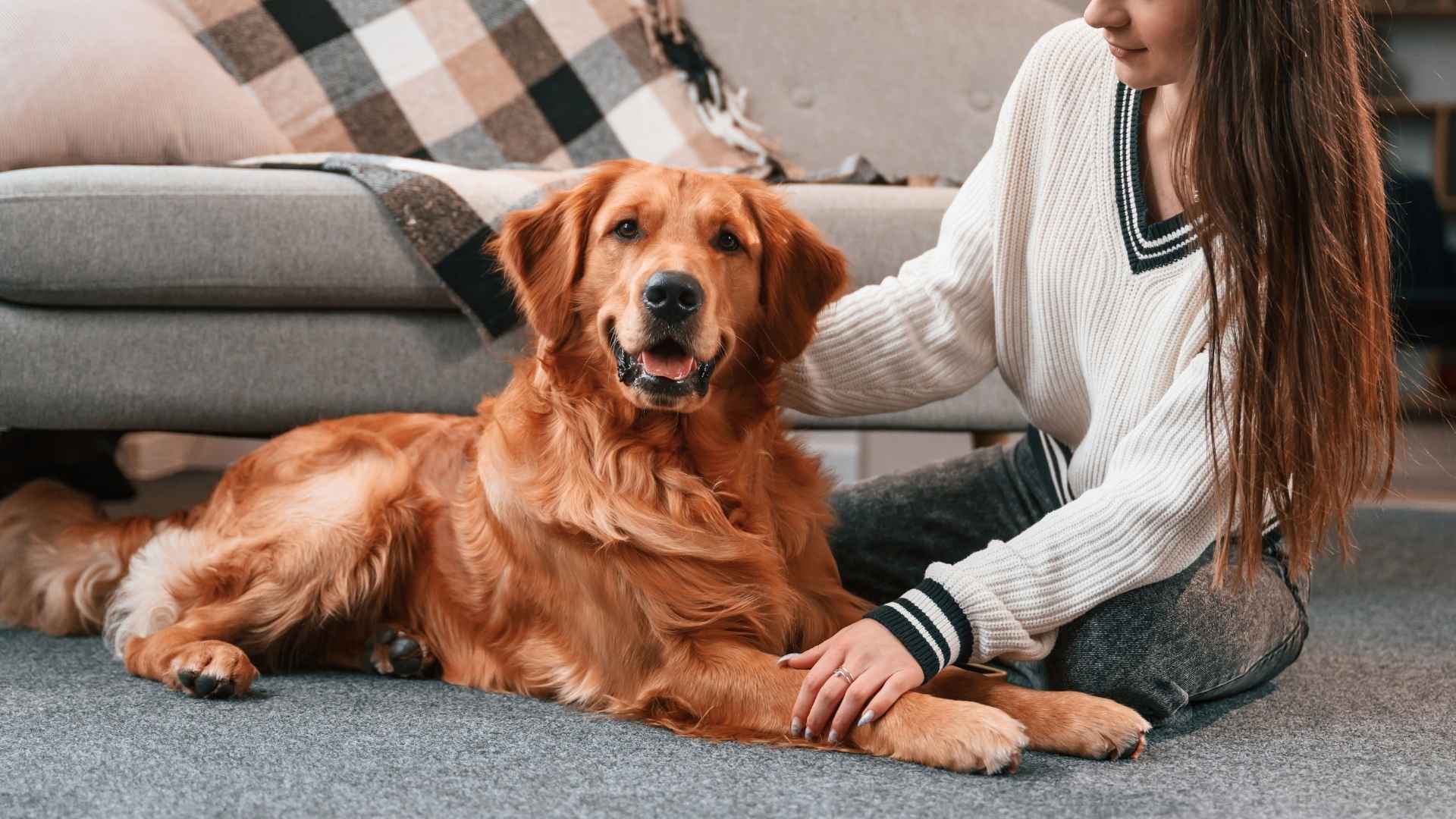Not every dog is bursting with boundless energy or ready to chase every ball in sight. In fact, some breeds are celebrated not for their athleticism or clever tricks, but for their calm, nurturing nature. These gentle companions offer a peaceful presence, responding to life’s chaos with quiet patience and affection, traits that make them perfect for families, seniors, and anyone seeking a relaxed furry friend.
Gentle dog breeds tend to have an even temperament and a deeply affectionate disposition. Whether it’s a toddler tugging at their ears or another pet sharing their space, these pups remain composed and accepting. Their ability to stay calm under pressure makes them ideal candidates for therapy or service roles, where measured reactions are not just preferred but essential.
If you’re looking for a dog that embodies patience, warmth, and quiet loyalty, this list is your guide. These breeds aren’t just calm, they’re content, adaptable, and endlessly loving, often happiest lounging beside their humans, offering steady companionship in every moment.
Most Gentle Dog Breeds
1. Cavalier King Charles Spaniel

Known for their affectionate and mild-mannered personality, the Cavalier King Charles Spaniel is ideal for families with kids or other pets. Their small size and calm nature allow them to adapt easily to a peaceful household routine without overwhelming energy or fuss.
How Do They Handle Social Situations?
Cavalier King Charles Spaniel thrives in companionship and makes an excellent therapy dog due to its welcoming temperament. Early socialization and gentle training help Cavaliers excel in various environments, making them perfect for homes with multiple family members or social lifestyles.
How Do You Care for Their Signature Coat?
According to AKC, the Cavalier’s lustrous, silky coat requires minimal upkeep, just regular brushing and occasional baths. This not only maintains the coat’s shine and prevents tangles, but also doubles as a soothing, bonding experience for the dog and owner.
Grooming also provides a chance to check for any abnormalities, while routine ear checks and monthly nail trims help prevent infections and discomfort.
Fun Fact: Despite their reputation as lap dogs, Cavaliers also enjoy physical activity thanks to their sporting spaniel heritage, a delightful blend of gentleness and liveliness in one graceful package.
2. Newfoundland
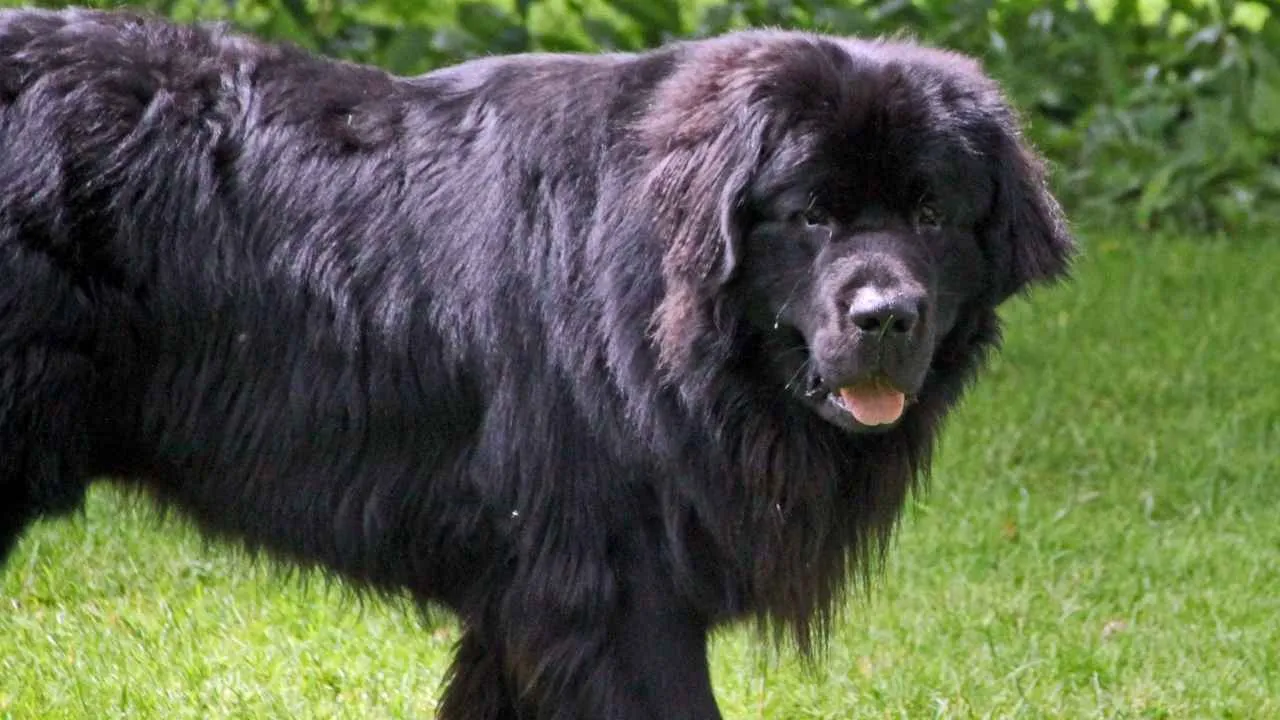
PetMD states that Newfoundlands, lovingly called Newfies, are among the largest dog breeds and are also known for their gentle and friendly nature. Despite their massive build, Newfoundlands are famously patient and loving.
Often called “gentle giants,” they are especially tender with children and generally get along well with other animals, including dogs and even cats.
Are They Easy to Train?
Thanks to their sociable and eager-to-please nature, training these friendly dogs can be an enjoyable experience. Their calm demeanor and emotional intelligence help them stay composed and adaptable in new environments.
What Makes Them Truly Unique?
Originally bred in Newfoundland, Canada, this breed worked alongside fishermen, often performing water rescues. Their thick, water-resistant coat and webbed paws make them natural swimmers, a rare combination that’s both functional and endearing.
Fun Fact: Standing up to 28 inches tall and weighing as much as 150 pounds, this calm dog breed may look intimidating, but their sweet and loyal temperament makes them beloved family members around the world.
3. Pug
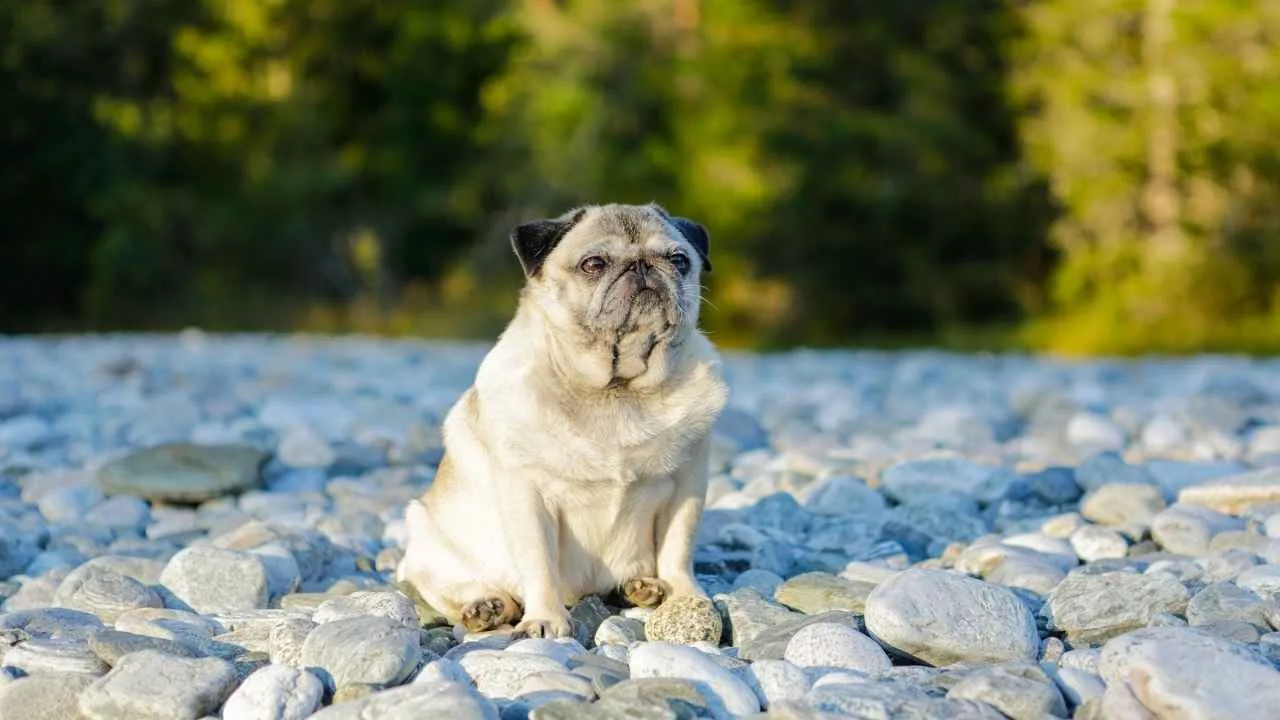
Purina reports that the Pug may be small, but it is sturdy and cherished for its fun-loving and sweet nature. As one of the oldest dog breeds, these charming pups thrive on giving and receiving affection. Pugs are affectionate companions that thrive on closeness.
Known for their gentle, silly personalities, they adore cuddling and bond quickly with their humans, especially those who shower them with attention.
Are They Good Around Others?
These small dogs, weighing between 14 and 18 pounds and standing 10 to 13 inches tall, are incredibly sociable. They generally get along well with strangers, other dogs, and children, provided play remains gentle and respectful.
What Makes Them So Endearing?
Pugs may have low energy levels, but their expressive faces and short coats require little maintenance. A daily walk and play session helps keep their weight in check. However, due to their flat faces, they are prone to breathing issues and must be monitored closely in hot or humid weather.
Fun Fact: Pugs are emotionally sensitive; ignore them too long or scold them harshly, and you might find them sulking with an unmistakably hurt expression.
4. Saint Bernard
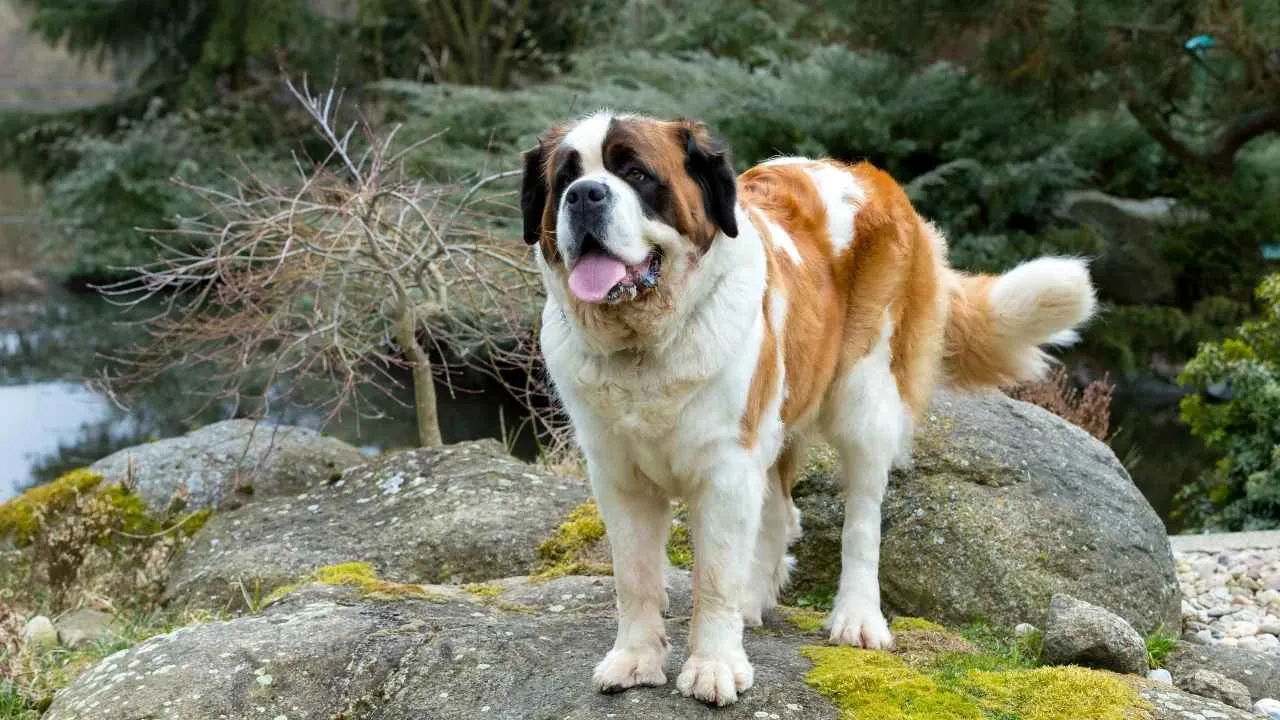
According to PDSA, Saint Bernards are famously gentle giants and are a good fit for most families, provided there is enough room to accommodate their large size. Despite their massive size, Saint Bernards are famously gentle and affectionate.
Known for their loyalty and patience, they thrive in households where they receive consistent attention and affection from their family.
How Do They Behave With Young Ones?
This loyal breed is kind-hearted but can easily knock over small children if not trained properly. Early obedience classes help harness their strength and teach them to be mindful of their size, especially during playtime.
Why Is Their Past So Remarkable?
Originally bred in the snowy Alps around 1050, these playful dogs were lifesavers for stranded travelers, assisting monks in their mountain rescues. Though the barrel-around-the-neck legend is more myth than fact, their wrinkled brows often wear an expression of warmth and friendliness.
Fun Fact: To maintain a healthy routine, Saint Bernards should be fed high-quality dog food in two daily meals, and always be given time to rest before exercise to support digestion.
5. Irish Wolfhound
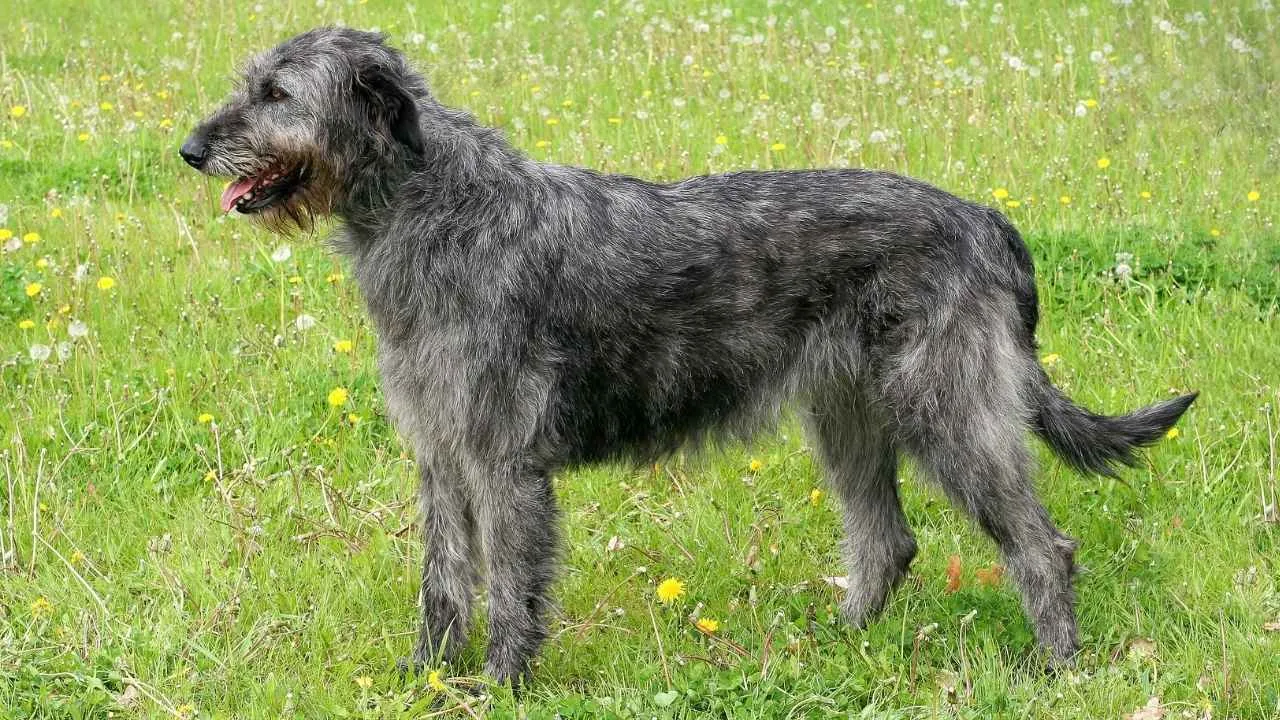
Despite their towering height, sometimes reaching up to 35 inches and 130 pounds, Irish Wolfhounds are among the gentlest of breeds. Their calm, affectionate, and gentle nature makes them wonderful companions and excellent therapy dogs.
What Should You Know About Their Diet?
These dogs are known for their sweet disposition, but their sheer size can pose a challenge in homes with small children. Accidental bumps or knock-overs are possible, making them better suited for families with older kids or adults.
How Can You Care for Their Size and Needs?
Feeding Irish Wolfhounds a high-quality diet designed for large breeds is essential to support their health. To avoid bloat, strenuous activity should be avoided before and after meals. Regular vet consultations ensure proper weight management and tailored care.
Fun Fact: Though they may look imposing, Irish Wolfhounds are so gentle that many have found purpose as emotional support or therapy dogs, offering both comfort and companionship in a giant-sized package.
6. Boerboel
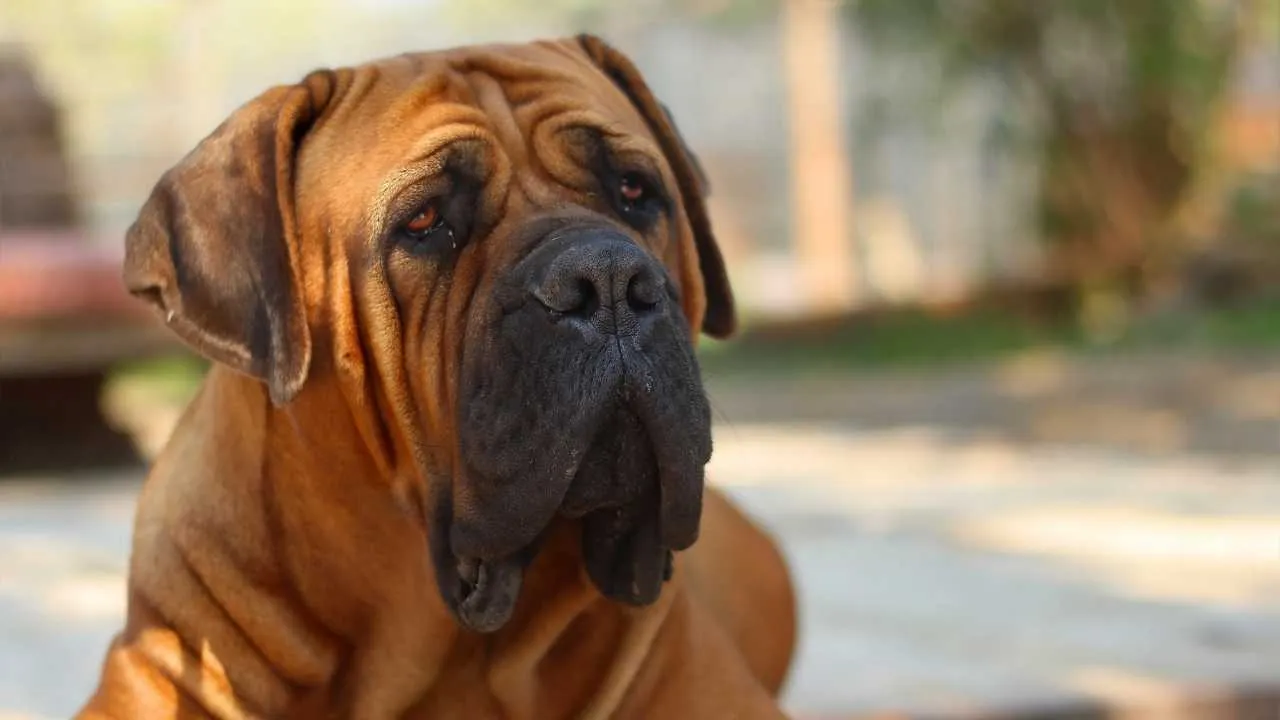
Though originally bred to fend off lions and hyenas, Boerboels are surprisingly gentle with their families. Known for their calm confidence and affectionate loyalty, they form deep bonds and are protective without being overly reactive.
WebMD explains that the Boerboel’s typical personality has two clear sides: they are deeply protective by nature due to their breeding, and are fearless, never retreating from a confrontation.
What’s Important to Know About Their Background?
These powerful dogs originated in South Africa, bred by Boer settlers, Dutch, German, and Huguenot farmers, to guard homes and livestock. Their bravery is legendary, with tales of them standing up to wild predators still shared by farmers today.
Why Are They Considered Unique?
Despite their imposing size and strength, Boerboels are soft-hearted when properly socialized. They were only recognized by the American Kennel Club in 2014, making them relatively new to the U.S. dog community. Their calm temperament at home contrasts with their fearless history.
Fun Fact: The word “Boerboel” literally means “farmer’s dog” in Dutch, a fitting title for a breed that served as both a working partner and loyal companion.
7. Tibetan Spaniel
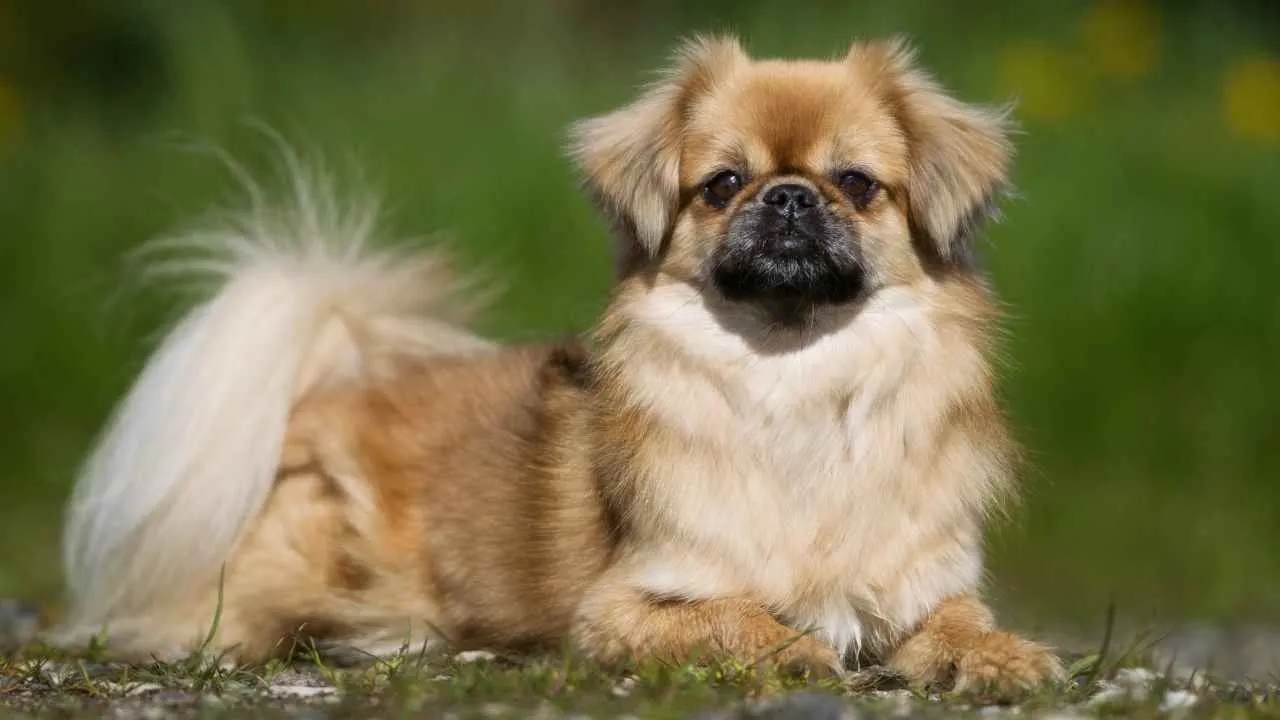
Tibetan Spaniels are joyful and affectionate, making them excellent companions, especially for apartment dwellers. These small dogs thrive on human connection and are happiest curled up beside their favorite people.
Do They Get Along With Strangers?
Though warm with their families, Tibbies may be cautious around new faces. To ease their nerves, gentle introductions to unfamiliar people and pets are essential for fostering trust and maintaining their naturally calm demeanor.
What Should You Know About Their Coat?
This breed’s low-maintenance coat doesn’t require trimming, aside from the fur on their feet for cleanliness. Regular brushing, especially behind the ears and on the rear fringes, keeps shedding under control and prevents matting. It’s best to avoid sanitary cuts, as they can cause discomfort and itching.
Fun Fact: Tibetan Spaniels are so sensitive about nail trimming that early training is key, if introduced gently as puppies, they’re more likely to accept regular grooming without fuss.
Conclusion
Gentle dog breeds come in all shapes and sizes, from towering Saint Bernards and Irish Wolfhounds to small, affectionate companions like Tibetan Spaniels and Pugs. Despite their different backgrounds and builds, these breeds share a calm, loving nature that makes them ideal for families, therapy work, or anyone seeking a steady, loyal companion. Their even temperaments and affectionate personalities allow them to thrive in diverse living environments and form deep bonds with their humans.
While many of these dogs were originally bred for guarding, working, or companionship, they’ve all proven that gentleness is just as essential as strength or intelligence. Breeds not covered in detail, like the friendly Labrador Retriever, or the calm yet strong Bernese Mountain Dog, also exemplify these soft-hearted qualities. Even breeds known for their high energy, such as Border Collies, can display gentleness when well-socialized and engaged.
Whether participating in dog sports or simply lounging at home, these dogs bring balance and warmth to daily life. Choosing a gentle breed is not only about temperament, but also about fostering an environment where calm companionship can flourish.


